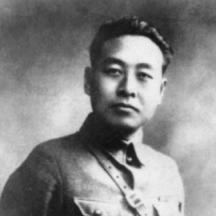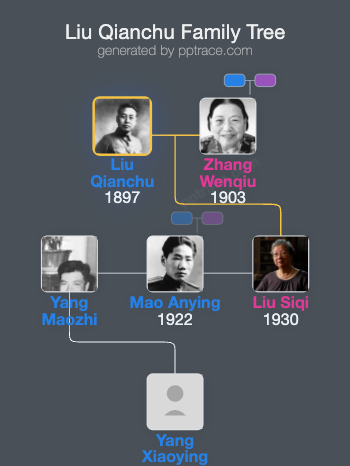
Liu Qianchu
| Name | Liu Qianchu |
| Title | Revolutionary martyrs from Pingdu, Shandong |
| Gender | Male |
| Birthday | 1897-01-01 |
| nationality | — |
| Source | https://baike.baidu.com/item/刘谦初/1886935 |
| pptrace | View Family Tree |
| LastUpdate | 2025-07-11T09:13:58.889Z |
Introduction
Liu Qianchu (1897–1931), courtesy name Qianchu, later changed to Qianchu; pseudonym Huang Boxiang, was a native of Pingdu County, Shandong Province. Born into a peasant family, his father named him in hopes that he would achieve something significant in the future. During his childhood, he received education at private schools and higher primary schools. In spring 1913, he was admitted to Pingdu Zhiwu Middle School and served as a clerk for the school’s Youth Association. In spring 1916, he went to Qingdao to join the army fighting against Yuan Shikai, participated in the battles to capture Weixian and Gaomi, and was awarded the "Volunteer Medal" for his meritorious service.
In 1917, he entered the County-normal Teacher Training Institute in Pingdu; later, in 1918, he was admitted to Qilu University preparatory program with excellent results. During his studies, he actively engaged in street speeches and patriotic propaganda. After the May Fourth Movement erupted, he took part in marches and demonstrations, and was expelled for promoting patriotic ideas. After graduating from the preparatory program in 1921, due to financial difficulties, he taught at the Chongshi Middle School in Huang County. Subsequently, he won a scholarship through an essay contest and was sent to further studies at Yenching University in Beijing.
While at Yenching University, he joined the Socialist Youth League, began to study Marxist ideas, participated in student movements, initiated the publication of “Yanda Weekly,” and authored many influential articles, demonstrating leadership abilities. In June 1924, he formally joined the Chinese Socialist Youth League. After graduation, he taught successively at Runzhou Middle School in Zhenjiang and Lingnan University.
In late 1926, he went to Wuchang to participate in the Northern Expedition, serving as the head of the Social Department of the Propaganda Section of the 11th Army of the National Revolutionary Army. He also served as deputy editor of “Blood Path” magazine. In January 1927, he officially joined the Chinese Communist Party. When he failed to arrive in Nanchang for the uprising promptly, he was reassigned to Shanghai and later sent to Fujian to work on the recovery and development of party organizations. From 1929, he returned to Shandong under the pseudonym Huang Boxiang, leading the reconstruction of the party organization, and served as Secretary and Propaganda Minister of the Shandong Provincial Communist Party Committee.
He led a workers’ strike at a textile factory in Qingdao, was imprisoned and tortured by reactionary authorities, yet remained steadfast. On April 5, 1931, while being transported to execution, he sang “The Internationale” loudly, displaying unwavering courage, and sacrificed his life at the age of 34.
His deeds hold great significance in the history of the Chinese Communist Party; he was posthumously recognized as a martyr. In 1931, with approval from the Central Committee, he was buried at the Jinan Heroes’ Mountain Revolutionary Martyrs Cemetery, joining the founders of the Shandong Party organization. Throughout his brief yet intense life, he exemplified firm revolutionary resolve and self-sacrifice, contributing significantly to the Chinese revolution.
Family Tree
Tap to expand more relatives
